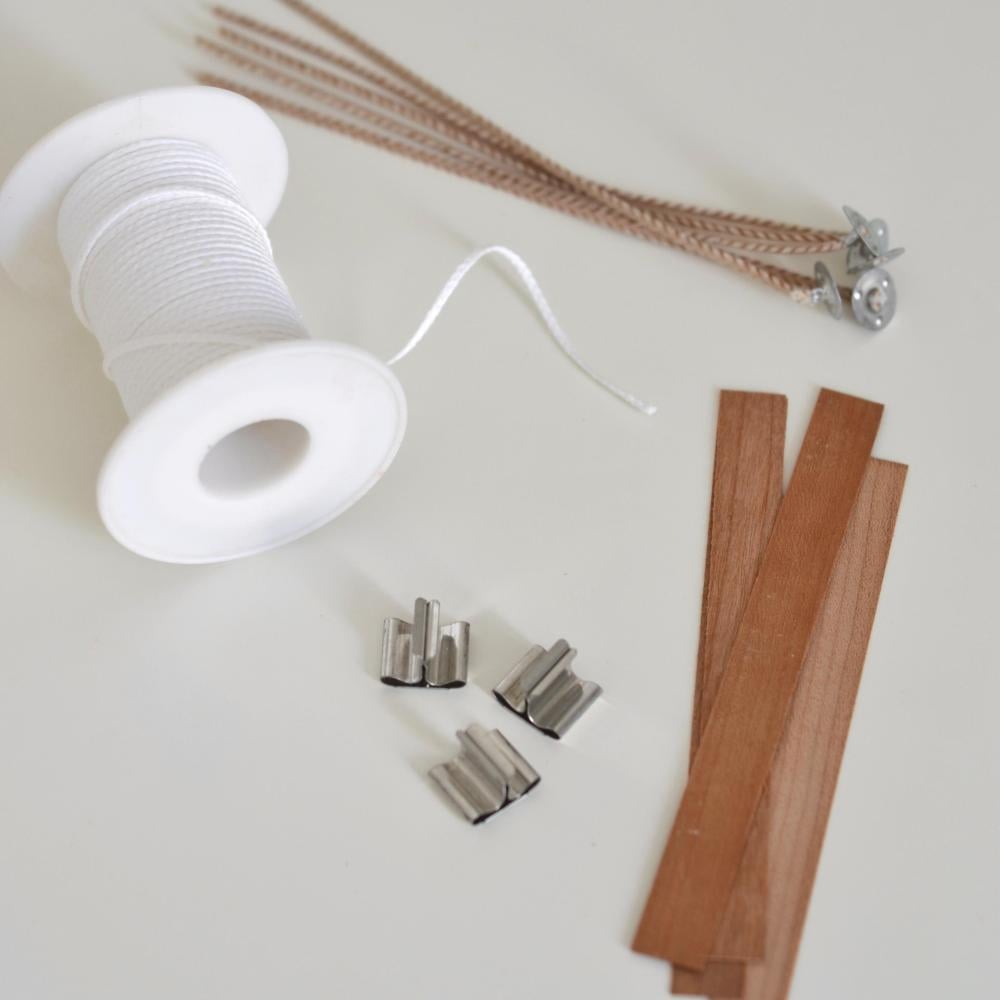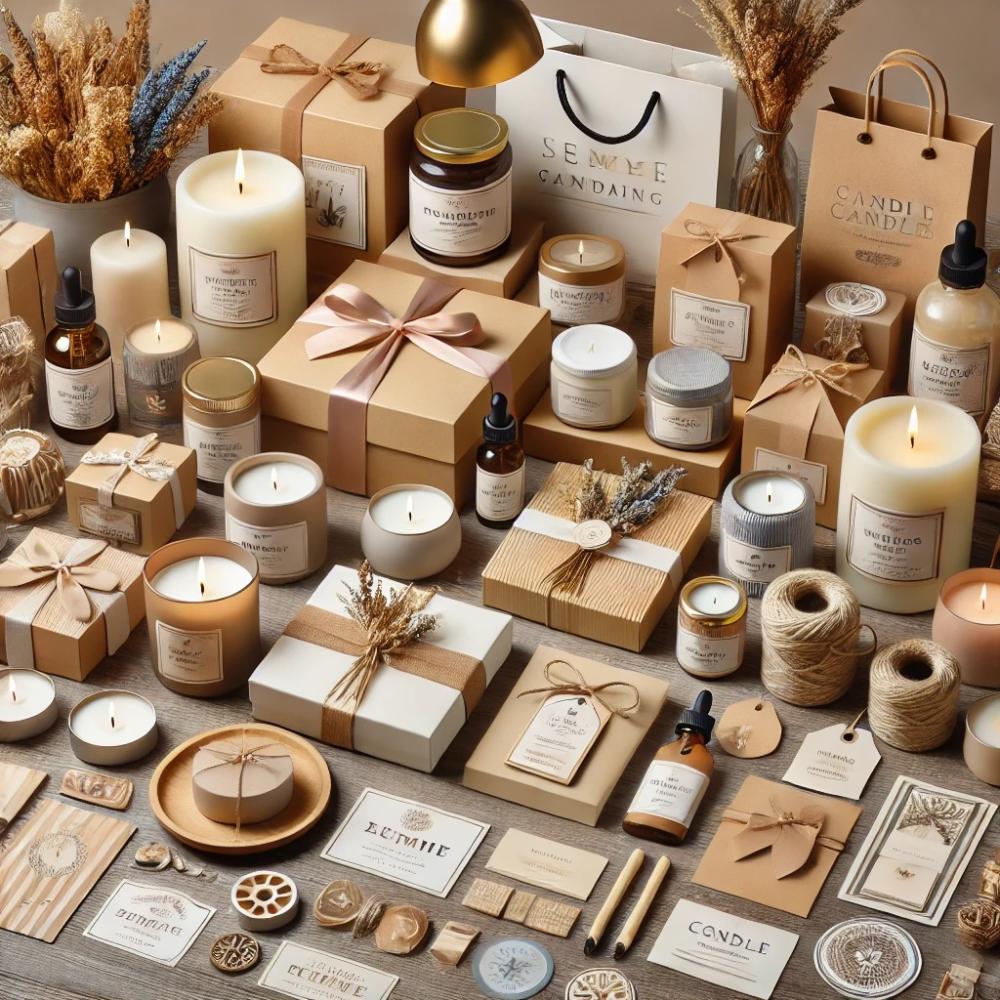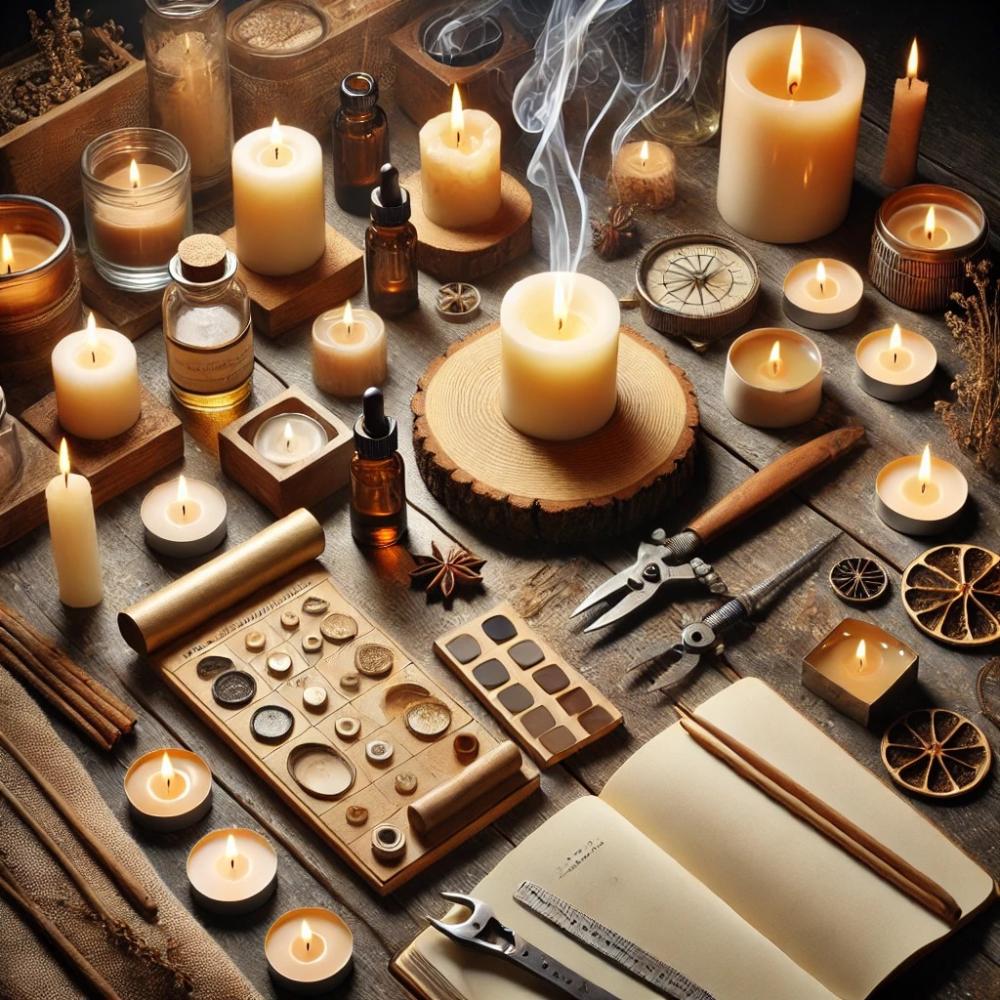The wick is an essential part of candle making, playing a crucial role in the quality of the burn, the stability of the flame, and the candle's burn time. Choosing the right wick can enhance your candle-making experience, ensuring even burning without smoke or drips. In this comprehensive guide, we'll explore the various factors that influence the selection of the ideal wick for your candles.
1. Understanding the function of the fuse
The wick is responsible for transferring the molten wax to the flame to keep the candle burning. This causes the molten wax to vaporize and ignite upon contact with the flame. The process of the wax being drawn up and rising through the wick is known as capillary action. If the wick is unsuitable, the wax may not burn properly, resulting in a hole in the center of the candle, black smoke, or a weak flame.
2. Factors to consider when choosing a wick
A. Type of wax
Each type of wax behaves differently when burning and requires a wick appropriate to the type of wax used. Some common types of wax include:
- Soy wax : It burns slowly and needs a wick that can absorb the wax well. Stranded cotton wicks are usually a good choice.
- Paraffin wax : Burns faster and can work well with a relatively small wick.
- Gel wax : It is denser and requires a larger or double wick to ensure even and consistent burning.
- Palm wax : tends to be more solid and may require a stronger wick to ensure flame continuity.
b. Candle diameter
The larger the diameter of the candle, the larger the wick you need to ensure the flame reaches all parts of the candle. Small or tall, thin candles (like dinner candles) need smaller wicks, while wide candles need thicker wicks.
c. Additives such as colors and fragrances
Adding essential oils or colors to wax can affect wick behavior. For example:
- Essential oils : If the concentrations are high, they can make the wax more fluid and require a stronger wick to absorb the wax and keep it burning.
- Colors : Some heavy colors may affect the flow of wax inside the wick, which may require a larger wick to avoid poor burning.
3. Types of wicks available
A. Stranded cotton wicks
These wicks are the most common and are an ideal choice for natural candles such as soy or bee wax. Stranded cotton wicks come in various sizes and can be suitable for most types of candles. They also contribute to a clean, stable, and smokeless burn.
b. Wood wicks
Wood wicks are a unique addition to candles. They produce a distinctive sound similar to burning logs, making them attractive for scented or luxury candles. Wood wicks work well with gel wax or large candles, but may require careful preparation to ensure even burning.
c. Metal or wax-impregnated wicks
These wicks are coated with wax or metal to make them more stable during pouring and burning. They are often used in scented candles or candles that require a long, steady burn.
4. How to test for a perfect wick
A. The "full path" test
It is essential to test the wick in a finished candle to ensure it works well with the components and materials used. Follow these steps:
- Pouring the candle : Prepare the candle completely using the chosen wick.
- Test the burning : Light the candle and let it burn for at least an hour. Observe how stable the flame is.
- Analyzing the results : If the flame is even and the candle burns without smoke or large gaps, the wick is suitable. If there is smoke or the candle is distorted, you may need to choose a larger or smaller wick.
b. Monitoring the appearance of the wick during combustion
- Carbon ball formation on the wick : If a large black ball forms on the wick, this indicates that the wick is too large.
- Small and weak flame : If the flame is very small, it means the wick is too small.
5. Additional tips for choosing the perfect wick
- Consult the wax manufacturers' guide : Many wax manufacturers provide recommendation tables for matching the wick to the type of wax used.
- Trial and error : You may need to try several types and sizes of wicks before finding the perfect wick for each type of candle.
- Using multiple wicks : In some cases, you may need to use two or more wicks for very large candles.
Conclusion
Choosing the perfect wick is a process that depends on several factors, such as the type of wax, the size of the candle, and the additives used. By understanding how these factors affect each other and testing wicks correctly, you can ensure the production of high-quality candles that burn smoothly and beautifully. Investing in the right wick is a vital step for candle makers who aspire to create successful and distinctive products.




